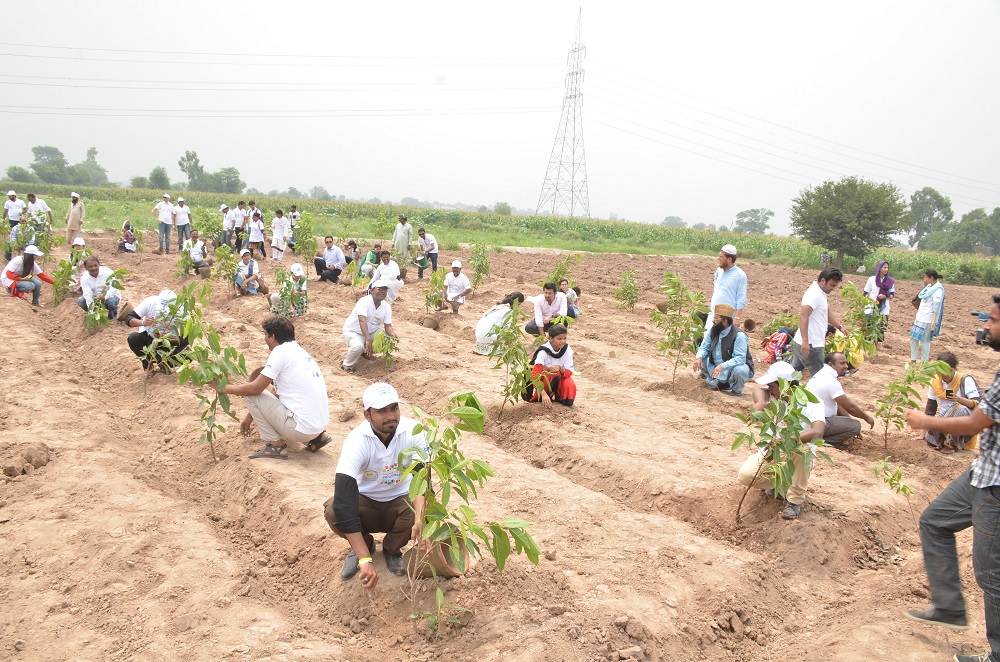SUMMARY
UNAP is planning a project of plantation and forestation in the province of Sindh. It will be a contribution to SDG 13 (Climate Action) which aims to conserve and restore the use of terrestrial ecosystems such as forests, wetlands, drylands and mountains by 2020. Halting deforestation is also vital to mitigating the impact of climate change. It calls for action to reduce the high level of air pollution in the cities and villages.
UN SDG 15 TARGETS:
- The project will help meet the following targets of SDG 15 – Climate Action.
By 2020, ensure the conservation, restoration and sustainable use of terrestrial and inland freshwater ecosystems and their services, in particular forests, wetlands, mountains and drylands, in line with obligations under international agreements. - By 2020, promote the implementation of sustainable management of all types of forests, halt deforestation, restore degraded forests and substantially increase afforestation and reforestation globally.
- By 2030, combat desertification, restore degraded land and soil, including land affected by desertification, drought and floods, and strive to achieve a land degradation-neutral world.
PROBLEM OVERVIEW
Urban Sindh
Karachi is among the most polluted cities in the world. The air of the city is polluted with high levels of lead and cadmium that pose a grave risk to public health, says a recent study that also points out that the average concentration of these trace metals found in residential areas of Karachi is higher than those found in Delhi and Beijing.
In another environmental study, the research team has found that Karachi, Pakistan, holds the world’s title for ozone. Of the nearly 300 measurements collected over 1 year, roughly a third exceeded what the researchers considered a “harmful” threshold for ozone, which can lead to smog.
Rural Areas of Sindh
The reason to choose Umerkot and the surrounding districts is that it borders with the arid zone of Tharparkar which has been manifesting the effects of climate change. The rainfall average has come down significantly over the last few years due to global warming and climate change. The meteorological surveys confirm that Tharparkar had a normal rainfall season in 2017 after a long gap of four years. The impact of increased forestation will markedly improve the rainfall averages.
A major segment of population of Umerkot district and Tharparker district relies economically on agriculture and related industry. Such decrease in rainfalls heavily affects the economic condition of the population of the district.
There are a number of red brick kilns in Umerkot and the nearby villages and towns. According to a conservative estimate, there are around 80 red brick kilns in Umerkot and the surrounding towns and villages. These kilns emit thick black carbon soot which is a major factor in increased air pollution of this region. The cleansing effect of forests will increase the oxygen content in the air and will help bringing down the pollution levels in the environment.
During the monsoon, the floods cause great loss to the villages by damaging the crops and general population. Many lives are lost and most people lose their houses and household items which becomes a cause.
PROPOSED SOLUTION:
Considering the land and forest situation in Sindh, especially the urban area of Karachi, a plantation project is planned to improve the environment and ecosystem of Karachi and Umerkot District, which is currently under the threat of a major environment threatening factor: air pollution.
There will be four (4) phases of the plantation project, each phase comprising of drives and campaigns to plant 5,000 trees in Karachi and rural areas of Sindh. The project will span across one year.
Social Forestry Division of the Forest Department of Government of Sindh will be involved for supply of plants and technical assistance. The local government of Karachi city will also be taken on board for allocation of land for the plantation drives.
Local schools and colleges which are registered with UNAP will be invited to participate in the plantation drives and campaigns. The youth of the city and villages will be involved so that they can gain awareness about the importance of forestation and plantation of trees to combat air pollution.
District wise land available under the control of Forest department is as under:
| Sr. No. | District | Area in hectares |
|---|---|---|
| 1. | Tharparkar/Umerkot | 109,516 |
| 2. | Karachi | 116,862 |
| 3. | Dadu | 159,031 |
| 4. | Thatta | 13,045 |
BUDGET
Cost of plants: 800,000 (20,000 @ Rs. 40)
Annual cost for maintenance and monitoring of 20,000 plants: TBC
Administrative cost (Transportation, travelling): TBC
References:
1. https://www.dawn.com/news/1123335
2. http://www.sciencemag.org/news/2017/03/here-are-some-world-s-worst-cities-air-quality
| Project Name: | Sindh Plantation Project |
|---|---|
| Project Priority: | Moderate |
| Estimated Time of completion: | 1 year |
| Estimated Budget: | TBC |
| Relevance: | SDG 13 (Climate Action) and SDG 15 (Life on land) |


